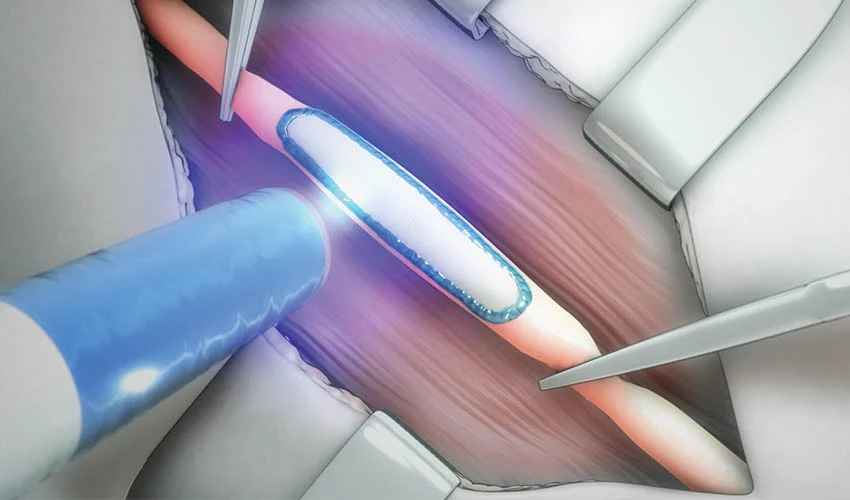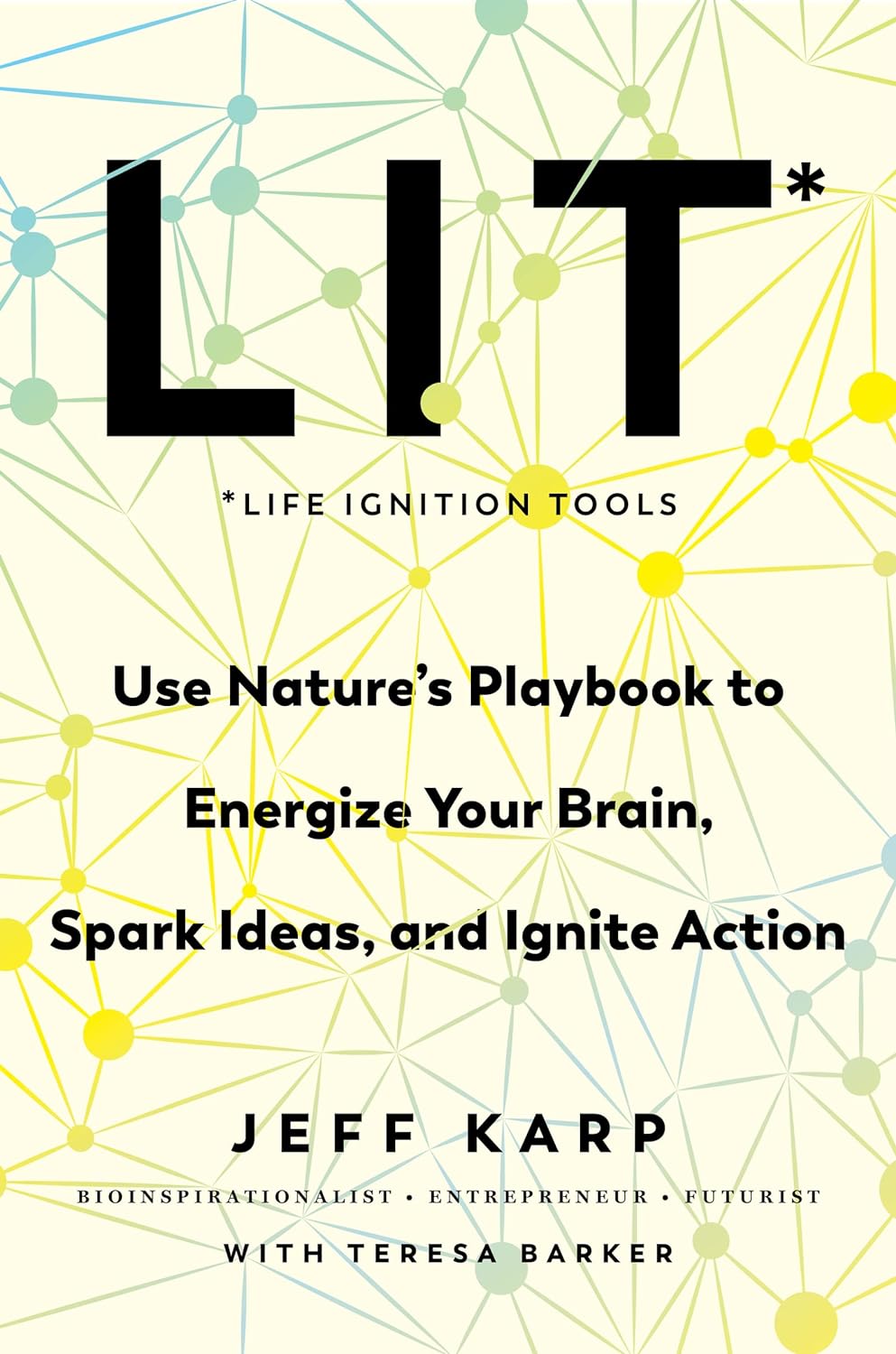Professor Jeffrey Karp earned his PhD in collaboration with BME at the University of Toronto in 2004. Focusing on the philosophy of translation, he has since become a professor at Harvard Medical School, translating many of his research topics into commercially viable products – ranging from nasal sprays for disinfection to bioadhesive tapes used in surgery. Professor Karp recently published his first book, “LIT: Life Ignition Tools,” discussing insights and advice gleaned from conversations with internationally renowned experts on building new habits. We had the opportunity to speak with him about his journey from an undergraduate student at McGill to an internationally renowned researcher.
What does your research lab specialize in?
My lab focuses on the iterative process of medical problem-solving, which we apply across various domains. Our approach prioritizes impactful innovation, guided by constantly questioning the benchmarks necessary to advance each project. By focusing on translational research, we aim to maximize societal benefits while acknowledging the importance of basic scientific groundwork.
I always wanted to adopt an approach where we figure out what’s needed in the medical field, and work backwards to find solutions. A major barrier is carrying the technology from lab to shelf, and I aim to break that barrier.
Over the last decade, I proactively engaged with professionals from various sectors, gradually building relationships and forming an informal advisory board for my lab. This network proved invaluable in assessing project feasibility, securing partnerships, and identifying potential CEOs for spin-off companies.
Reflecting on my early setbacks, I embraced the concept of radical simplicity, minimizing complexity in our projects and considering the post-lab implications from the outset. This shift in perspective, nurtured through ongoing collaboration and feedback, fuels our efforts to translate academic discoveries into tangible clinical outcomes.
Could you provide a few instances of products that have been commercialized directly from research conducted in your laboratory?
One example of a commercialized product stemming directly from our research projects is bioinspired tissue adhesives. Several years ago, Dr. Pedro J. del Nido, the chief of cardiac surgery at Boston Children’s Hospital, approached us with a challenge faced in pediatric cardiac procedures. Children born with holes between the chambers of their hearts presented a delicate problem: sutures often tore the fragile tissue, and existing devices were unsuitable due to their permanent nature and inability to accommodate the growing heart.
Through extensive research and collaboration, we developed a tissue glue capable of bonding within a beating heart, even with blood flow. This breakthrough led to the founding of TISSIUM, a Paris-based company, which obtained regulatory approval for vascular reconstruction in Europe using glue and initiated clinical trials for hernia repair and nerve reconstruction.
Additionally, we developed a nasal spray shown in laboratory conditions to eliminate 99.99% of various viral and bacterial pathogens, including COVID-19, influenza, adenovirus, E. coli, and pneumonia-causing bacteria. Formulated with generally recognized safe agents, this product aligns with our principle of radical simplicity, facilitating rapid market entry while maintaining safety standards.
Furthermore, our research extended to skincare, resulting in products like SKINTIFIQUE, marketed in France and more broadly across Europe. One notable innovation is a cream designed to alleviate nickel allergies, a common issue affecting around 10% of the population. Nanoparticles in the cream adsorb nickel, preventing skin contact and subsequent inflammatory reactions.
These examples illustrate our commitment to translating research findings into practical solutions, addressing diverse challenges in healthcare and beyond.



Can you talk a bit about your academic journey?
When I joined McGill University in 1994, I initially pursued a path toward medical school by enrolling in the basic biology program. Driven by a passion for problem-solving, I explored various departments, ultimately discovering my affinity for physics and engineering. Recognizing that chemical engineering offered the ideal blend of problem-solving and scientific inquiry, I transitioned into the program during my second year.
Intrigued by the prospect of delving into the field of biomedical engineering, I decided to extend my undergraduate studies by a year, obtaining the necessary physiology prerequisites and immersing myself in related coursework.
This additional year of study not only deepened my understanding of tissue engineering and biomaterials but also ignited a newfound passion for biomedical engineering. Eager to further explore this field, I pursued graduate school at the University of Toronto, where I engaged with researchers, including Professors John E. Davies and Molly Shoichet.
During my PhD, I found myself deeply curious about various fields and took time to learn how to study cell migration in 2D and 3D, create 3D polymeric scaffolds with a variety of materials, develop cutting tools to shape the scaffolds, and process histological samples and perform analysis. I also took a course on writing for engineers and a statistics course and in my spare time I conducted science experiments for elementary school children during their lunch hour. Additionally, I was very intrigued by my advisors’ passion for translation – finding to convert scientific discoveries into products that help patients.
Upon transitioning to my postdoc in Professor Bob Langer’s lab, I initially played it safe by extending my work in bone engineering from my PhD. However, driven by an insatiable curiosity, I soon delved into unfamiliar territory, exploring polymer synthesis, tissue adhesives, microscale technologies, and more.
Recognizing the importance of securing funding to drive my research agenda, I took the initiative in grant writing. Securing substantial grants, including one from the National Science Foundation, allowed me to assemble a team and establish my mini-lab within Bob’s lab. This experience not only honed my mentorship skills but also empowered me to lead projects aligned with my evolving vision.

Can you tell me a bit about your book LIT? What does the title mean?
My book, “LIT: Life Ignition Tools,” explores 12 simple yet powerful holistic tools designed to infuse fresh energy, perspective, and purpose into everyday life. It serves as an encyclopedia of techniques to break free from autopilot mode, a state where we often find ourselves inundated with distractions and trapped in unproductive patterns.
In today’s fast-paced society, where our attention is constantly hijacked by notifications and marketing efforts, it’s easy to fall into routines that don’t serve us well. Whether it’s habitual behaviors like always having dessert after dinner or taking the same route to work every day, these patterns can keep us stuck.
For the book I had the opportunity to interview a diverse range of individuals, including Nobel Prize winners, Olympic medalists, social justice leaders, artists, scientists (such as David Suzuki), CEOs, and indigenous leaders, the book shares stories and insights on how to live intentionally and deeply connect with others.
“LIT” serves as a guide for anyone seeking to break free from the constraints of autopilot living and embrace a more purposeful and energized existence.
What do you think is a major motivation for people to change their habits?
We have that process of evolution within us! Evolution provides a powerful analogy for understanding why people choose to change their habits. Just as the environment constantly changes around us with shifts in weather, temperature, and natural disasters, our innate ability to adapt and evolve plays a crucial role. This adaptability, rooted in neuroplasticity, allows us to update our strategies for interacting with our environment, learn from our experiences, and thrive by remaining flexible and adaptive.
To reclaim control over our lives, we need tools to intercept these patterns and align our actions with our values. By tapping into our internal cues and listening to our bodies and minds, we can break free from societal programming and live intentionally. This shift allows us to regain autonomy and make deliberate decisions that serve our well-being rather than being passive recipients of external influences.
LIT champions the belief that meaningful change is within our reach, inviting each of us to contribute uniquely to shaping a brighter future. I invite you to join this journey, not just as readers but as active co-creators in building the world we desire. Let’s light up the world together.
For more about Jeff Karp’s book, read more here: https://jeffkarp.com/


